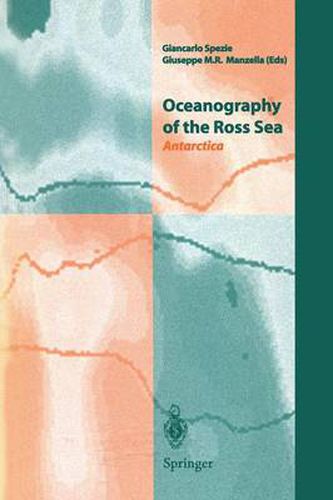Readings Newsletter
Become a Readings Member to make your shopping experience even easier.
Sign in or sign up for free!
You’re not far away from qualifying for FREE standard shipping within Australia
You’ve qualified for FREE standard shipping within Australia
The cart is loading…






This title is printed to order. This book may have been self-published. If so, we cannot guarantee the quality of the content. In the main most books will have gone through the editing process however some may not. We therefore suggest that you be aware of this before ordering this book. If in doubt check either the author or publisher’s details as we are unable to accept any returns unless they are faulty. Please contact us if you have any questions.
The era of the exploration of the World Ocean is not yet over: some areas still lack an adequate number of observations. The relationships between the physical, chemical and biological processes, which sustain the life on this planet, are not yet fully understood. In short, knowledge of the oceans is still far from satisfactory. This book covers an important period in the study of one of the last investigated areas of the World Ocean: the Ross Sea, Antarctica. During the 1990s, long-term experiments were conducted in this area as part of the Climatic Long-term Interaction for the Mass balance in Antarctica (CLIMA) project of the Italian National Programme for Antarctic Research (PNRA), providing a wealth of oceanographic information. This book is an outcome of the CLIMA field obser vations and international collaborations with the most important programmes in the Ross Sea-Southern Ocean area. It contributes to the st!ldies of the spatial and temporal variability of Ross Sea water masses and circulation and their relation ship with the Southern Ocean circulation. A comprehensive review of historical data is offered, and new data sets are analysed. The studies presented in this book show that much progress has been achieved during the last decade, but large gaps in our understanding of the physical processes in the Ross Sea are still to be filled. However, these studies contribute significantly to the investigation of some specific aspects regarding the circula tion of the main water masses.
$9.00 standard shipping within Australia
FREE standard shipping within Australia for orders over $100.00
Express & International shipping calculated at checkout
This title is printed to order. This book may have been self-published. If so, we cannot guarantee the quality of the content. In the main most books will have gone through the editing process however some may not. We therefore suggest that you be aware of this before ordering this book. If in doubt check either the author or publisher’s details as we are unable to accept any returns unless they are faulty. Please contact us if you have any questions.
The era of the exploration of the World Ocean is not yet over: some areas still lack an adequate number of observations. The relationships between the physical, chemical and biological processes, which sustain the life on this planet, are not yet fully understood. In short, knowledge of the oceans is still far from satisfactory. This book covers an important period in the study of one of the last investigated areas of the World Ocean: the Ross Sea, Antarctica. During the 1990s, long-term experiments were conducted in this area as part of the Climatic Long-term Interaction for the Mass balance in Antarctica (CLIMA) project of the Italian National Programme for Antarctic Research (PNRA), providing a wealth of oceanographic information. This book is an outcome of the CLIMA field obser vations and international collaborations with the most important programmes in the Ross Sea-Southern Ocean area. It contributes to the st!ldies of the spatial and temporal variability of Ross Sea water masses and circulation and their relation ship with the Southern Ocean circulation. A comprehensive review of historical data is offered, and new data sets are analysed. The studies presented in this book show that much progress has been achieved during the last decade, but large gaps in our understanding of the physical processes in the Ross Sea are still to be filled. However, these studies contribute significantly to the investigation of some specific aspects regarding the circula tion of the main water masses.